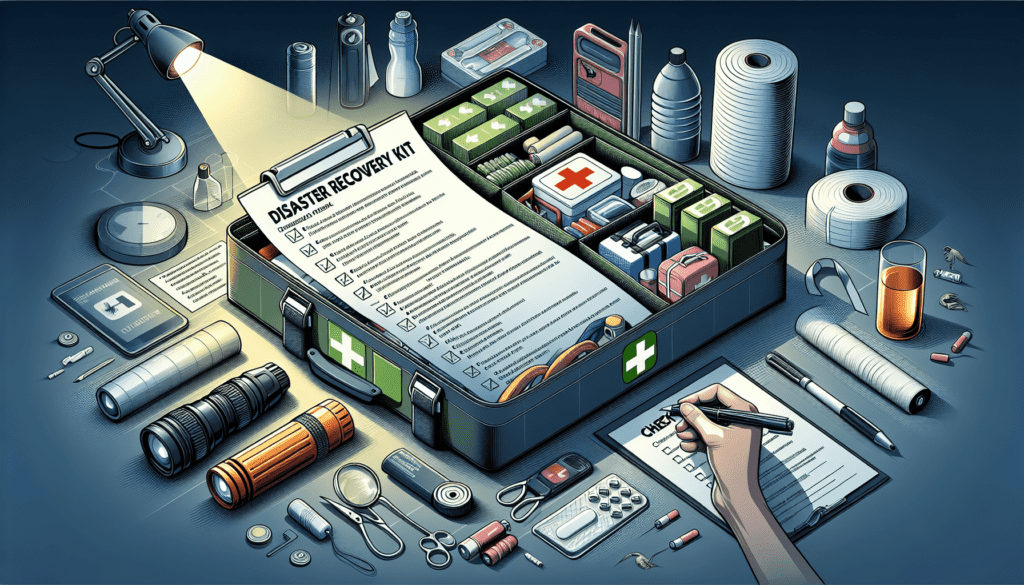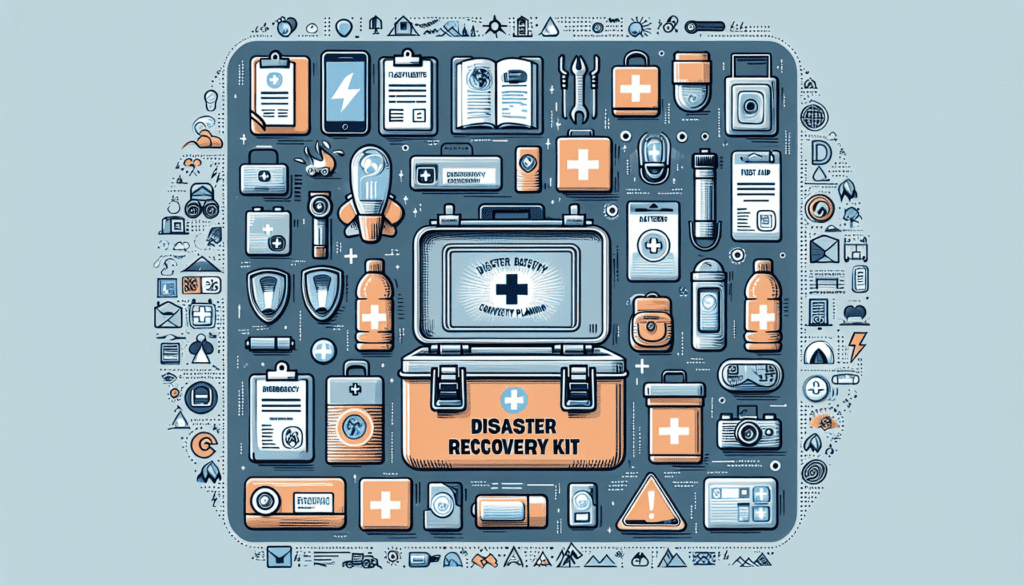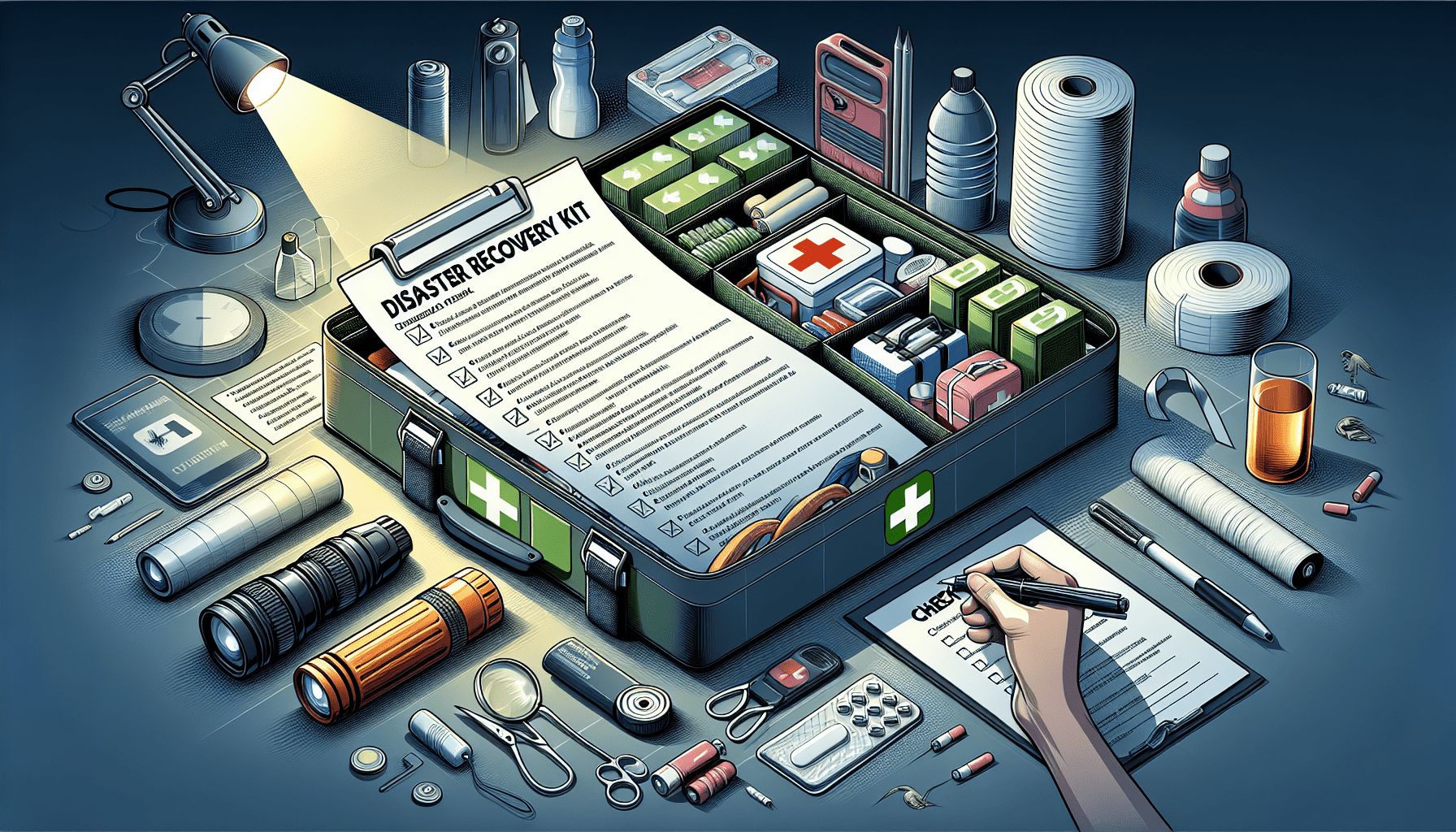Best Practices For Disaster Recovery And Business Continuity Planning
Have you ever wondered what would happen to your business in the event of a natural disaster or major system failure? Disaster recovery and business continuity planning are essential for ensuring the survival and success of your organization in the face of unexpected disruptions. In this article, we will discuss best practices for creating and implementing an effective disaster recovery and business continuity plan to protect your business and minimize downtime.
Understanding Disaster Recovery And Business Continuity Planning
Disaster recovery and business continuity planning are essential components of any organization’s overall risk management strategy. While many people use the terms interchangeably, they actually refer to two distinct processes that work together to ensure the survival and success of a business in times of crisis.
Disaster Recovery
Disaster recovery focuses on the processes and procedures an organization must put in place to recover and restore its IT infrastructure and data after a disaster. This could include anything from natural disasters like floods and earthquakes to man-made events like cyber attacks and hardware failures. The goal of disaster recovery is to minimize downtime and data loss so that your business can continue to function as quickly and efficiently as possible.
Business Continuity Planning
Business continuity planning, on the other hand, is a broader process that encompasses disaster recovery as well as the overall strategic planning and preparedness activities an organization must undertake to ensure its operations can continue in the event of a disruption. This includes everything from identifying critical business functions and processes to establishing alternate operational sites and communication channels.
Assessing Your Organization’s Risk Profile
Before you can create an effective disaster recovery and business continuity plan, you need to first assess your organization’s risk profile. This involves identifying potential threats and vulnerabilities that could impact your business and understanding the potential impact of those risks.
Assessing your organization’s risk profile involves conducting a thorough risk assessment that considers both internal and external factors that could impact your business. This could include everything from natural disasters and cyber attacks to supply chain disruptions and regulatory changes.
By understanding your organization’s risk profile, you can better prioritize your disaster recovery and business continuity efforts and ensure you are prepared for the most likely and impactful threats.

Creating A Comprehensive Disaster Recovery Plan
Once you have assessed your organization’s risk profile, the next step is to create a comprehensive disaster recovery plan that outlines the processes and procedures your organization will follow to recover from a disaster and restore its IT infrastructure and data.
Identify Critical Systems And Data
The first step in creating a disaster recovery plan is to identify your organization’s critical systems and data. These are the systems and data that are essential for the day-to-day operations of your business and without which your business would be severely impacted.
By identifying your critical systems and data, you can prioritize your recovery efforts and ensure that you are focusing on the most important aspects of your business.
Establish Recovery Time Objectives (RTOs) And Recovery Point Objectives (RPOs)
Recovery time objectives (RTOs) and recovery point objectives (RPOs) are two key metrics that organizations use to measure the effectiveness of their disaster recovery plans. RTOs refer to the amount of time it takes to recover and restore a system after a disaster, while RPOs refer to the amount of data that can be lost during a disaster without causing significant harm to the organization.
By establishing RTOs and RPOs for your critical systems and data, you can ensure that your disaster recovery plan is focused on meeting the needs of your business and minimizing downtime and data loss.
Develop Recovery Procedures
Once you have identified your critical systems and data and established RTOs and RPOs, the next step is to develop detailed recovery procedures that outline the steps your organization will take to recover and restore its IT infrastructure and data after a disaster.
Recovery procedures should be comprehensive and easy to follow, with clear instructions for each step of the recovery process. This could include everything from contacting key personnel to restoring backups and testing systems before bringing them back online.
Test, Test, Test
One of the most important aspects of disaster recovery planning is testing your plan to ensure it works as intended. Regular testing helps to identify any gaps or weaknesses in your plan and allows you to make adjustments before a real disaster strikes.
Testing should include both tabletop exercises, where key personnel walk through the plan in a simulated environment, as well as full-scale drills where you actually bring systems back online and test their functionality.
Implementing An Effective Business Continuity Plan
While disaster recovery is focused on the IT infrastructure and data, business continuity planning is a broader process that encompasses the overall strategic planning and preparedness activities an organization must undertake to ensure its operations can continue in the event of a disruption.
Identify Critical Business Functions And Processes
The first step in creating a business continuity plan is to identify your organization’s critical business functions and processes. These are the functions and processes that are essential for the overall success and survival of your business, and without which your business would be severely impacted.
By identifying your critical business functions and processes, you can better prioritize your business continuity efforts and ensure that you are focusing on the most important aspects of your business.
Establish Communication And Coordination Protocols
Communication is key during a crisis, which is why it is essential to establish communication and coordination protocols as part of your business continuity plan. This could include everything from designated emergency communication channels to contact lists for key personnel and stakeholders.
By establishing communication and coordination protocols, you can ensure that everyone in your organization knows how to communicate during a crisis and that you can quickly and effectively coordinate your response efforts.
Create Alternate Operational Sites
In the event of a disaster that renders your primary operational site unusable, it is essential to have alternate operational sites in place where your business can continue to function. These sites could include everything from backup data centers to temporary office space.
By creating alternate operational sites, you can ensure that your business can continue to operate even in the face of a major disruption and minimize the impact on your operations.
Develop A Comprehensive Crisis Management Plan
A crisis management plan is a key component of any business continuity plan, as it outlines the processes and procedures your organization will follow to respond to and recover from a crisis. This could include everything from activating your emergency response team to coordinating with external partners and stakeholders.
By developing a comprehensive crisis management plan, you can ensure that your organization is prepared to respond effectively to any crisis and minimize the impact on your business.

Maintaining And Updating Your Disaster Recovery And Business Continuity Plans
Creating a disaster recovery and business continuity plan is just the first step in ensuring the survival and success of your organization in the face of unexpected disruptions. It is essential to regularly maintain and update your plans to ensure they remain effective and relevant.
Regularly Review And Update Plans
Regularly reviewing and updating your disaster recovery and business continuity plans is essential to ensure they remain effective and relevant. This could include everything from updating contact lists to testing new technologies and procedures.
By regularly reviewing and updating your plans, you can ensure that they continue to meet the needs of your organization and are prepared for the most likely and impactful threats.
Conduct Training And Awareness Programs
Training and awareness programs are essential for ensuring that everyone in your organization knows their role and responsibilities in the event of a disaster or crisis. This could include everything from tabletop exercises to full-scale drills and training sessions.
By conducting training and awareness programs, you can ensure that your organization is prepared to respond effectively to any crisis and minimize the impact on your business.
Collaborate With External Partners And Stakeholders
Collaborating with external partners and stakeholders is essential for ensuring the success of your disaster recovery and business continuity efforts. This could include everything from sharing best practices with industry peers to coordinating with government agencies and emergency responders.
By collaborating with external partners and stakeholders, you can leverage their expertise and resources to enhance your organization’s preparedness and response capabilities.
Conclusion
Disaster recovery and business continuity planning are essential for ensuring the survival and success of your organization in the face of unexpected disruptions. By following the best practices outlined in this article, you can create and implement an effective disaster recovery and business continuity plan that protects your business and minimizes downtime.
Remember, disaster recovery and business continuity planning is an ongoing process that requires regular review, testing, and updates to remain effective. By prioritizing preparedness and resilience, you can ensure that your business is ready to respond to any crisis and continue to thrive in the face of adversity.










